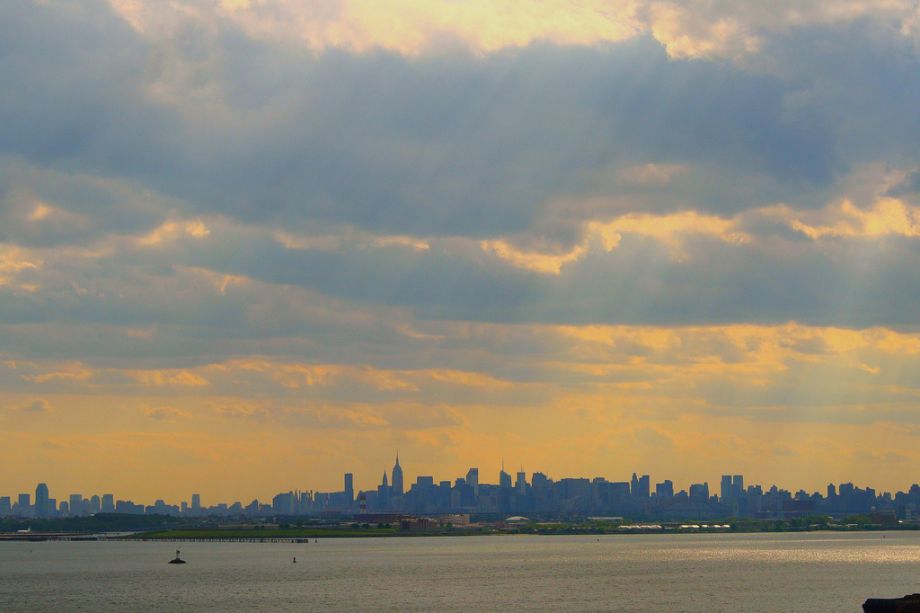As many major American cities lost jobs and population in the post-war period, analysts struggled to develop a cohesive explanation for their failure: Why were they falling apart, even as the federal government invested millions of dollars in urban renewal and public housing programs?
One hypothesis was that these older cities were simply too big and too dense. Paul Harvey, a 1970s syndicated columnist wrote that places like New York were “too weak to support their own weight,” comparing them to dinosaurs.
The urban renaissance of the 1990s and the full-fledged renewal we’ve seen over the past ten years have put to rest many of these concerns. Since 2000, according to the most recent Census estimates, New York City alone grew by a staggering 340,000 people, reaching an all-time population high of 8.4 million. Perennial losers like Philadelphia and Pittsburgh have also posted gains since the turn of the century.
But the question of how well massive urban agglomerations like New York work in ensuring efficient access to employment for all of their citizens is a different issue entirely. Indeed, there is some evidence that metropolitan regions that are very large produce geographic obstacles to job access, limiting the ability of the poor and lower class to reach workplaces in a reasonable amount of time.
A new study published this month in Urban Studies by Emre Korsu and Sandrina Wenglenski suggests that, at least in the case of the Paris metro area, these obstacles are forbidding. Their paper, Job Accessibility, Residential Segregation, and Risk of Long-Term Unemployment in the Paris Region, suggests strongly that commuting barriers produced by long journey times to work diminish the employment prospects of a significant percentage of people living in hard-to-reach areas.
The research also demonstrates some of the difficulties specifically encountered by people who have no access to automobiles.
The authors of the study looked at the unemployment faced by people living in the Ile-de-France region (which surrounds Paris) continuously in the same specific municipality between 1990 and 1999. The report defined job accessibility as the percentage of metropolitan area work locations located within one hour of any specific neighborhood by car or public transit. Today, 80 percent of the region’s residents have commuting times of less than 60 minutes.
The data show that the probability of long-term unemployment increases from 7.4% for people living in areas of very high job accessibility to 9.6% for people living in areas of very low job accessibility. In other words, if you’re further from jobs, you’re about three percentage points more likely to stay off the work rolls. Wealthier people are far more likely to live closer to jobs than the poor.
Of the people living in areas with poor job accessibility, 64 percent have no car available, and of those, 90 percent could benefit from better connections to work if they had an automobile.
The evidence is compelling as it confirms the frequently mentioned spatial mismatch hypothesis that suggests that because poor people live in places far from jobs, they are more likely to remain impoverished. Though this research was conducted on the Paris region alone, it seems likely that residents of other major metro regions face similar structural barriers to reaching employment, because it takes too long to find potential jobs.
Addressing these barriers to work must be of major concern to planners, who should find ways to reduce the distance — either physically or temporally — between housing and work.
The French authors reject the solution offered by the Gautreaux program and its descendants, which literally moved poor people from the inner city to the suburbs, where more work was theoretically available.
According to them, these solutions don’t actually bring people closer to the majority of jobs. The advantage of placing offices and housing in urban centers rather in than the suburbs is that they are reachable by people from every part of the region, not just from one side, as are suburban job sites. This is particularly apparent in Paris, where major office districts are located in the suburbs and poor people are primarily outside of the city, and where accessibility continues to be a struggle. American urban areas are beginning to imitate the same demographic distribution.
Suburbs also feature higher transportation costs, a fact that is in evidence all over the U.S., as the Center for Neighborhood Technology has recently documented.
The only conceivable solution, then, seems to be to densify the urban core, focus jobs there, and improve transportation links into the center from across the region. But this effort will always have its drawbacks, especially for very large metro areas like New York or Paris. The bigger the region, the harder it becomes to get people to and from work within an acceptable time period, even if all the jobs are located downtown. Smaller regions have the advantage of being able to offer their citizens easier access to more of the region’s offerings.
But the great mega-cities of the world are also those that drive economic growth. Perhaps their lack of accessibility is the price to be paid for their vitality.

Yonah Freemark is a senior research associate in the Metropolitan Housing and Communities Policy Center at the Urban Institute, where he is the research director of the Land Use Lab at Urban. His research focuses on the intersection of land use, affordable housing, transportation, and governance.
















